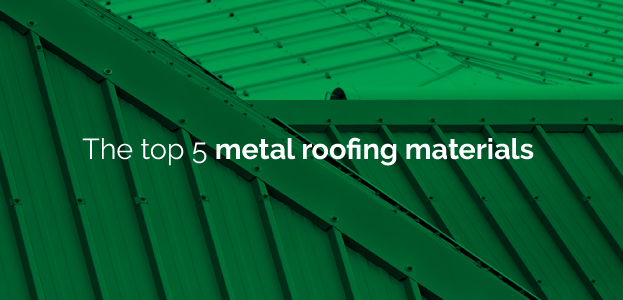
The top 5 metal roofing materials
March 05th, 2019
Category: All Blogs, Tips and tricks
Whether you’re a homeowner looking to replace their roof, a distributor selling metal roofing sheets to your customers or even a contractor dealing directly with a business or homeowner, it’s vital you know the difference between each metal roofing material. Metal roofing offers multiple benefits and over the last decade has garnered a lot of popularity for itself. While there are various options to choose from, the most popular metal roofing materials are copper, zinc, aluminium, tin and steel. Let’s take a closer look at each of them.
Copper
The godfather of metal roofing – copper roofs have been around for centuries, often believed to be the first metal roofing material. History shows that copper roofs were used by the Romans all the way back in 27 B.C to cover the roof of the Pantheon. To this day, copper roofs are used all over the world in homes, massive architectural structures and commercial buildings. Copper is an extremely long-lasting material that can last close to 200 years. Not only that, but copper roofs are 100% recyclable making them one of the most environmentally friendly metal roofing options.
Zinc
Zinc is an excellent option for homeowners and business owners looking for metal roofing materials that can stand the test of time. It is a favourite among architects and contractors because of its ease of use and immunity to corrosion. Zinc is one of the few metal roofing materials that develop a patina – a protective blueish or greenish layer over its scratches or minor damages. This enables zinc roofs to stay strong for over 100 years. Not to mention, zinc is extremely malleable and can be manipulated into many shapes, making it easy to form different styles of roofs.
Aluminium
Aluminium roofing is one of the most popular metal roofing options in the world. What makes it an excellent material is the fact that aluminium can withstand the harshest weather conditions, particularly damage caused due to salt and seawater. This is why aluminium is strongly recommended for projects along the coastline. While aluminium is exceptionally durable, the actual reason is that as an element in itself, aluminium reacts to atmospheric conditions around it to create a protective layer of aluminium oxide. This layer acts as a shield, effectively sealing the inner layers of metal from corrosion and other signs of damage. Like zinc, aluminium too has a natural patina and is often colour-coated to increase its aesthetic appeal.
Tin
Tin is very often considered to be a rare and unused option as a metal roofing material. Tin was first introduced in the 19th century as a canning material. People soon discovered that tin could be flattened out and hence was used to create roofing shingles. However, as time progressed and newer materials like zinc and aluminium were discovered and found to be much more durable, the use of tin as a metal roofing material soon began declining.
Steel
Steel as a roofing material is created using an alloy of iron and other elements. Steel is one of the world’s most popular building materials, used in both commercial construction and residential buildings as well. Because the initial creation of steel is energy-intensive, many people tend to shy away from using it as a metal roofing material. While there are many such myths and misconceptions surrounding metal roofing materials, the truth is that the steel we use today is made from recycled materials and can be recycled again after its lifetime. There are three primary types of steel namely:
Stainless steel – Stainless steel is one of the most commonly used materials to manufacture parts and products for several applications. Stainless steel comes with high corrosion resistance, durability and impact resistance. All products produced using stainless steel have a long shelf life and perform exceedingly well in any environment.
Galvanised steel – Galvanised steel is a by-product of a process called galvanisation – a process through which a protective zinc layer is applied to either iron or steel to prevent rusting. This is done by submerging steel components in a bath of molten zinc. Galvanised steel is moisture and rust resistant and hence are used to manufacture electronics, construction material, etc. and offers multiple benefits.
Galvalume – Galvalume is a combination of the three most popular metal roofing materials – aluminium, zinc and steel. The process begins with a steel sheet that is continuously hot-dipped with an alloy of aluminium and zinc until it reaches a coating of 55% aluminium, 43.5% zinc and 1.5% silicon.
These popular metal roofing materials can meet all of your metal roofing requirements. However, it is essential to understand the unique aspect of each structure to choose the right roofing material.
At Dura Roof, we are dedicated to providing our customers with the information they need to make the right decision. Reach out to us today for all your metal roofing needs.
Leave a Comment

3 Responses received for this post